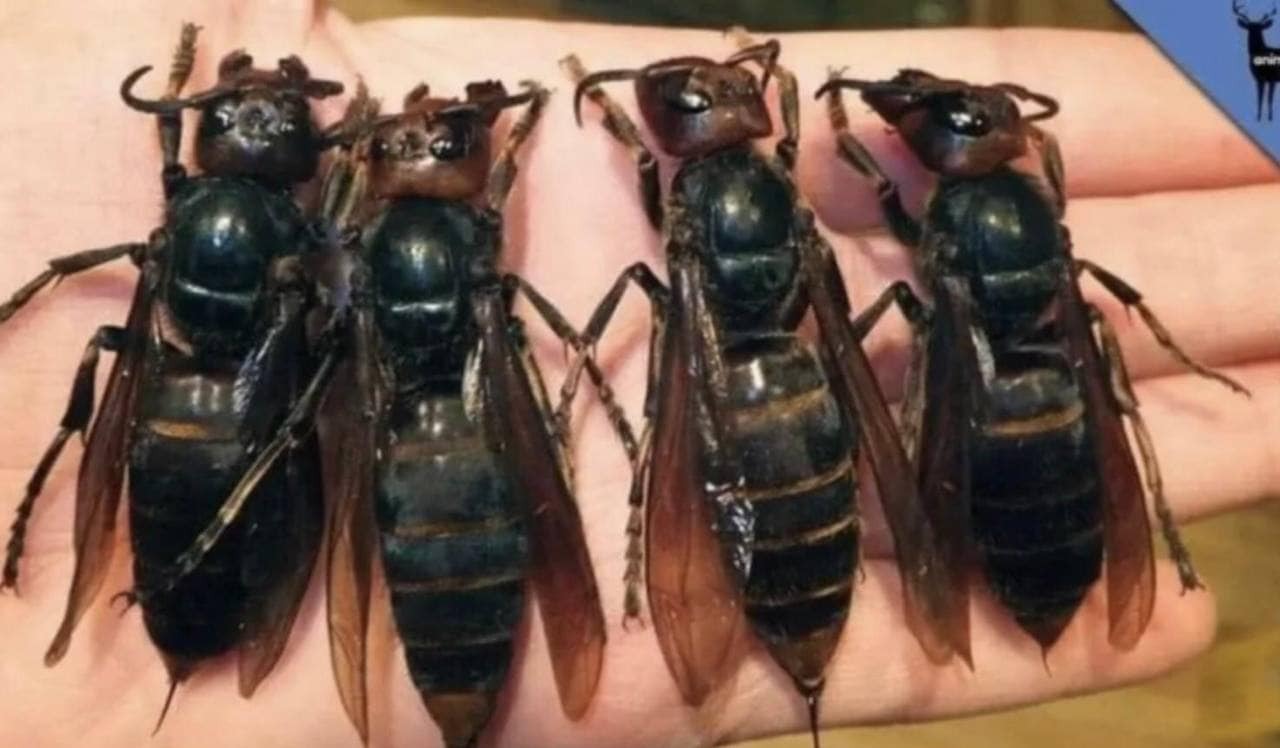The invasion of murder hornets—a term given to the giant Asian hornet—is causing concern for both the environment and public safety. These hornets, known for their enormous size and deadly efficiency, pose a significant threat to honeybee populations and humans alike.

A Devastating Attack on Honeybees
With their powerful mandibles, these hornets can wreak havoc on bee colonies. They decapitate and murder hundreds of bees, taking over the hive and using it to feed their offspring. The destruction they cause is not just a danger to individual hives but to the broader ecosystem as well. Honeybees are critical pollinators, and a decline in their population can have far-reaching consequences on agriculture and plant life.
Murder hornets can break apart the brood of a bee colony, which is essential to the growth and survival of the hive. This violent behavior allows the hornets to dominate, feeding their larvae with the remains of the bees they kill, leaving behind a path of destruction.
The Danger to Humans
While the primary concern is their impact on bee populations, these hornets also pose a threat to humans. A sting from a murder hornet injects a large amount of venom, which can cause severe pain, swelling, and in rare cases, death. Though it’s uncommon for a single sting to be fatal, the risk increases when multiple stings occur.
The venom delivered in a murder hornet sting can be especially dangerous for individuals who are allergic to insect stings. Even for those without allergies, the sheer quantity of venom injected by the hornet can lead to serious medical complications. Human fatalities from these stings are rare, but the potential danger remains a cause for concern.
Controlling the Spread
To address the growing threat of murder hornets, entomologists and environmental agencies have begun taking action. In Washington State, the WSDA (Washington State Department of Agriculture) is working to trap and track these invasive insects. Live traps are being set up in areas where the hornets have been spotted. Once captured, the hornets are tagged and released so that scientists can trace them back to their nests, with the ultimate goal of eradicating the nests before they spread further.
The proximity of recent hornet sightings to the US-Canada border has also prompted officials in Canada to set up their own traps to prevent the spread of the species into the region. The coordination between these efforts is essential for keeping the invasive species in check and protecting both the environment and human populations.
A Serious Ecological Threat
The appearance and spread of the murder hornet is a stark reminder of the dangers nature can pose. With the potential to decimate bee populations—an essential part of the ecosystem—and cause harm to humans, controlling this invasive species is of utmost importance.
Efforts to monitor and manage murder hornets are crucial to maintaining ecosystem balance. Honeybees play an irreplaceable role in pollination, and the collapse of bee populations would have devastating effects on crops, plant life, and the overall environment. As authorities continue to fight back against this invasive species, it’s clear that managing the murder hornet threat is key to preserving the health of both our ecosystems and our communities.





